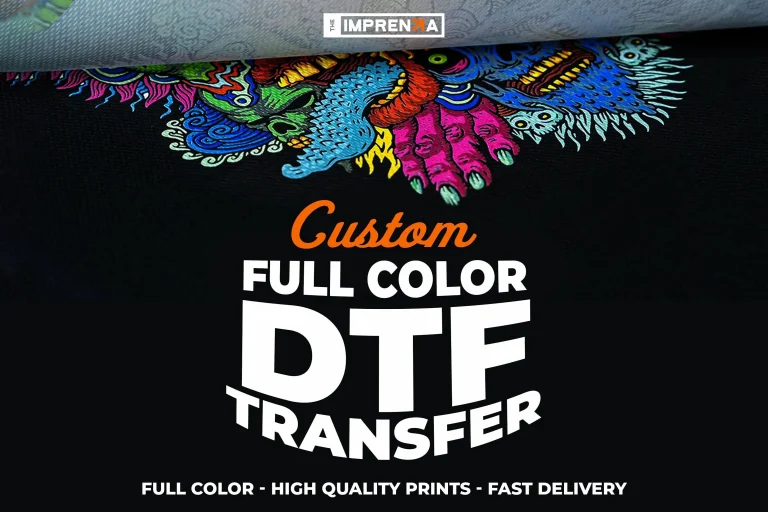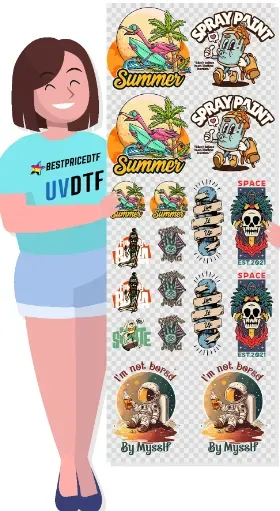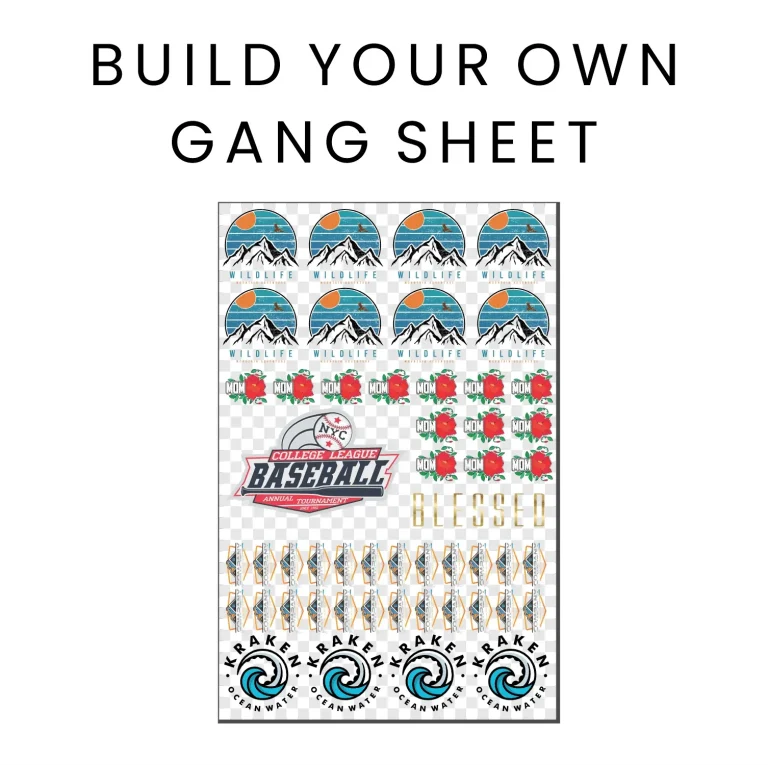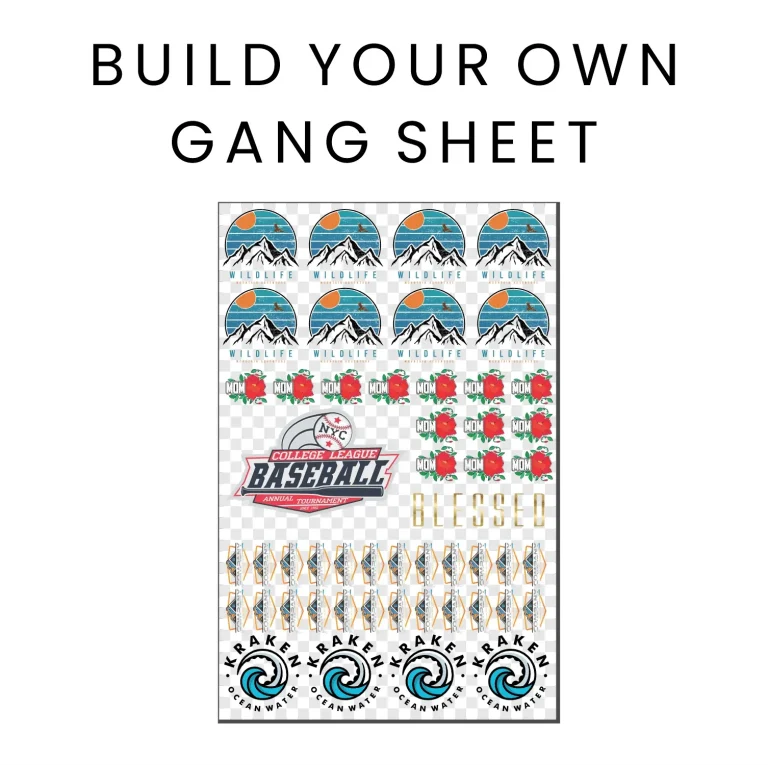UV DTF Printing: The Game Changer for Designers and Print Shops
UV DTF printing is at the forefront of the latest innovations in the printing industry, showcasing how UV printing technology can transform design and production processes. This revolutionary method, known as Direct-to-Film printing, employs ultraviolet light to effectively cure inks on various substrates, resulting in vibrant and durable prints that exceed traditional techniques. The efficiency and versatility of UV DTF make it a standout choice for designers and print shops looking to expand their offerings and improve sustainability through eco-friendly practices. As the demand for high-quality printing techniques rises, UV DTF printing meets these expectations while minimizing material waste, making it a game changer in modern printing solutions. Indeed, the rise of UV DTF signifies a new era where customization meets efficiency, creating endless possibilities for both businesses and consumers alike.
Exploring alternative terms for UV DTF printing, you may come across phrases like ultraviolet direct-to-film printing or UV direct-to-film technology, which highlight the integration of UV light in the printing process. This contemporary method of print production stands as a testament to the advancements in printing technology, allowing for a broad spectrum of applications across multiple materials. With a strong focus on sustainability, this innovative printing solution not only delivers high-quality results but also aligns with eco-friendly practices that are becoming increasingly important in today’s market. By leveraging the capabilities of UV DTF, designers and print shops can reimagine their offerings with a commitment to both quality and environmental responsibility. Ultimately, this technique opens new doors for creativity and profitability within the evolving landscape of the printing industry.
Understanding UV DTF Printing Technology
UV DTF printing, or UV Direct-to-Film printing, represents a significant innovation in the printing technology landscape. Utilizing ultraviolet light, this process cures inks directly onto specialized films that can then be applied to various substrates. This cutting-edge method allows for detailed and high-resolution prints on a diverse array of materials, including textiles, wood, glass, and ceramics. By harnessing UV light, manufacturers ensure that the colors are vibrant and patterns remain intact, catering to clients who demand high-quality and durable prints.
Moreover, the technology’s versatility sets it apart from traditional printing methods. Print shops can now diversify their offerings and cater to different markets by applying UV DTF printing techniques to a wide range of products – from custom apparel to promotional items. This capability not only expands potential business avenues but also enhances customer satisfaction as clients seek unique, personalized products that stand out in the marketplace.
The Unmatched Versatility of UV DTF Printing
One of the most compelling advantages of UV DTF printing is its unmatched versatility. This technology allows print shops to produce high-quality prints on nearly any type of substrate, effectively meeting the diverse needs of various market segments. For instance, designers can create custom gifts, promotional material, or even home decor items using the same technology, thus streamlining production processes and inventory management.
This broad applicability means print shops can tap into niche markets, catering to clients who seek customized solutions. By accommodating a wide range of applications, UV DTF technology enhances business appeal and allows companies to stand out in an increasingly competitive industry. Whether printing on flexible textiles or rigid surfaces, the adaptability of UV DTF makes it an essential tool for modern designers and print professionals.
Durability Factors in UV DTF Printing
Durability is a critical consideration in the printing industry, and UV DTF technology excels in providing long-lasting results. The UV-cured inks offer exceptional resistance to various challenges such as fading, scratching, and washing. This durability not only ensures that the prints maintain their visual integrity over time but also translates into significant value for clients looking for products that offer longevity.
As consumers become increasingly discerning about the quality of the products they purchase, the demand for durable print solutions rises in tandem. UV DTF printing meets this demand head-on, enabling designers and print shops to produce striking products that can withstand the rigors of everyday use. Offering such durable products not only enhances customer loyalty but also positions businesses as leaders in quality craftsmanship.
Efficiency: The Competitive Edge of UV DTF Printing
Efficiency in production processes is crucial for success in the printing industry, and UV DTF printing offers significant advantages over traditional methods. With its rapid curing capabilities and shorter setup times, this technology allows businesses to produce high volumes of printed materials swiftly. This increased speed of production not only boosts output but also enhances a print shop’s ability to meet urgent client deadlines.
Furthermore, this efficiency leads to improved profit margins. As businesses can fulfill orders quickly and minimize downtime, they can take on more work and accommodate larger projects without compromising quality. In today’s fast-paced market, having the agility to respond to client needs promptly can make all the difference in maintaining a competitive edge.
Greener Solutions with UV DTF Printing
As sustainability becomes a crucial aspect of the printing industry, UV DTF printing stands out as an eco-friendly alternative to traditional methods. This technology typically emits fewer volatile organic compounds (VOCs), resulting in a lower environmental footprint. Print shops and designers looking to enhance their green credentials will find UV DTF an ideal choice, aligning with consumer preferences for sustainable practices.
In addition to reduced emissions, UV DTF printing contributes to sustainable production practices by minimizing material waste. Its precise ink application methods lead to more economical use of resources, allowing businesses to operate efficiently and responsibly. By adopting UV DTF technology, print shops can express their commitment to sustainability while offering high-quality, environmentally conscious products that appeal to modern consumers.
Recent Innovations in UV DTF Technology
The field of UV DTF technology is marked by continuous innovation, with manufacturers and developers actively enhancing the capabilities of this printing method. Recent advancements include new ink formulations that improve adhesion and flexibility, resulting in even higher print quality across a wider variety of substrates. As technology progresses, print shops that invest in these innovations can provide better services and products tailored to client desires.
Additionally, increased focus on optimizing the equipment design aims to streamline the UV DTF printing process, making it easier for businesses to scale operations to meet growing demands. These innovations are essential for helping print shops stay relevant and competitive while accommodating evolving consumer preferences in the market.
Frequently Asked Questions
What is UV DTF printing and how does it work?
UV DTF printing, or UV Direct-to-Film printing, uses ultraviolet light to cure inks directly onto special films, which can then be transferred onto various substrates. This method allows for detailed and high-quality prints on diverse materials such as textiles, wood, glass, and ceramics, making it a versatile option for designers and print shops.
What are the advantages of using UV DTF printing in the printing industry?
UV DTF printing offers numerous advantages, including versatility in printing on a wide range of substrates, durability of prints that resist fading and scratches, and efficiency with quicker setup and curing times. Additionally, it supports sustainable printing solutions by reducing VOC emissions and material waste.
How does UV DTF printing contribute to sustainable printing practices?
UV DTF printing supports sustainable printing practices by emitting fewer volatile organic compounds (VOCs) compared to traditional methods. Its precise application reduces ink waste, making it an eco-friendly option that helps print shops maintain lower environmental impact while delivering high-quality products.
In what ways can UV DTF printing enhance product offerings for designers?
UV DTF printing enhances product offerings by allowing designers to create customized apparel, promotional items, and decorations on various substrates with high resolution. Its versatility and ability to accommodate a wide array of design needs empower designers to cater to diverse markets and customer preferences.
What recent advancements have been made in UV DTF printing technology?
Recent advancements in UV DTF printing include the development of new ink formulations that improve adhesion and flexibility, enhancing print quality on different substrates. Innovations in equipment design have also emerged, streamlining the printing process for high-volume demands in the printing industry.
Why should print shops consider adopting UV DTF printing technology?
Print shops should consider adopting UV DTF printing technology due to its numerous benefits, including efficiency in production, high-quality results, and sustainability. By embracing this innovative technique, print shops can stay competitive, meet consumer demands, and expand their service offerings effectively.
| Key Features | Description |
|---|---|
| Versatility | Ability to print on various substrates allowing for a wide range of products. |
| Durability | UV-cured inks are resistant to fading and scratching, ensuring long-lasting products. |
| Efficiency | Quicker setup and curing times improve production output and client service. |
| Eco-Friendly | Lower emissions of volatile organic compounds (VOCs) make this a greener choice. |
| Reduced Material Waste | Precise ink application minimizes waste and reduces costs for print shops. |
Summary
UV DTF printing is indeed a revolutionary advancement in the printing industry. This technology not only enhances the quality and variety of printed products but also addresses critical industry concerns such as durability and sustainability. With its ability to produce high-resolution prints on diverse materials, UV DTF empowers designers and print shops to meet a wide range of customer needs while minimizing environmental impact. As this technology continues to evolve, it will play a crucial role in shaping the future of effective and eco-friendly printing solutions.







